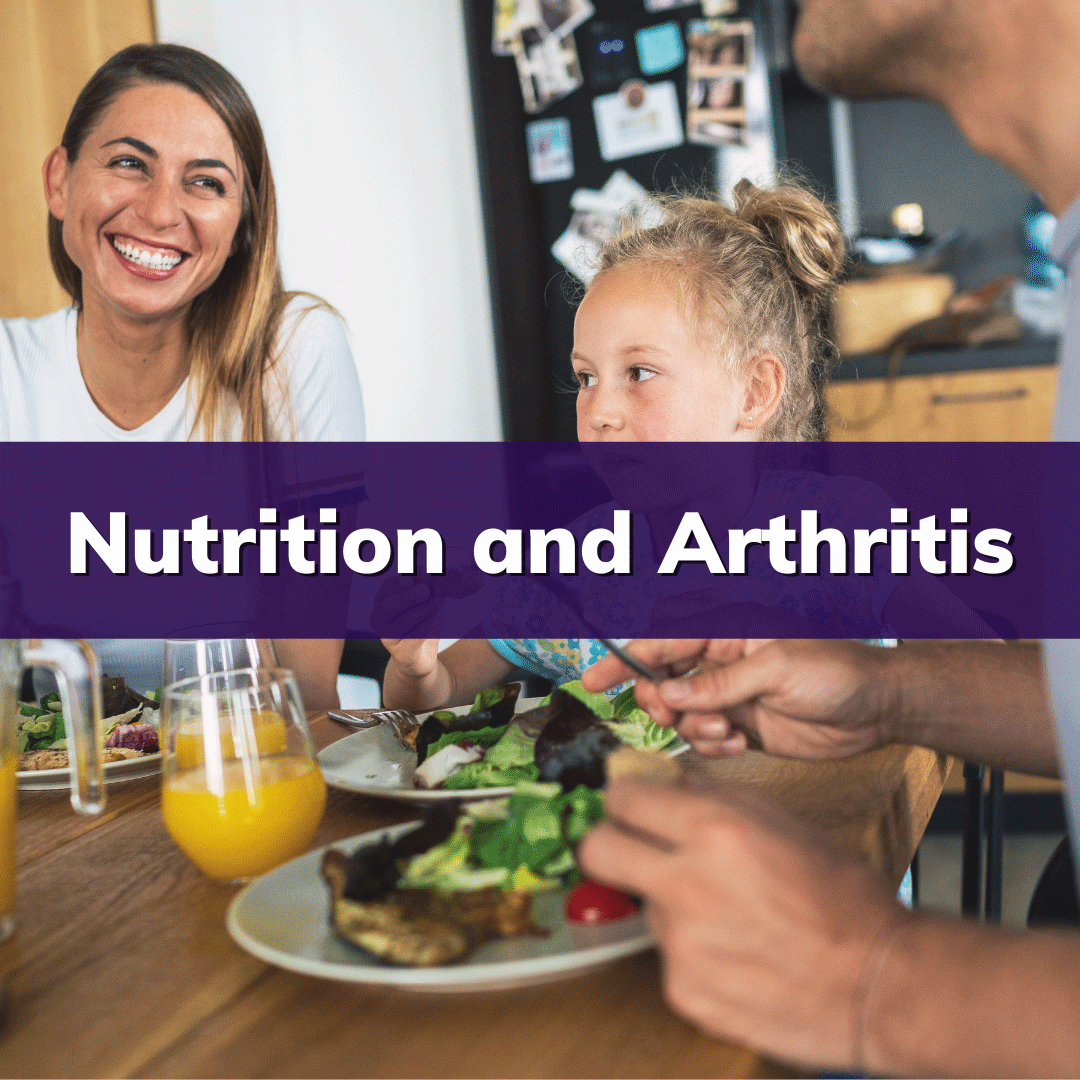Healthy Eating Patterns
Arthritis New Zealand takes great care to ensure that the nutrition information is true, correct and as accurate as possible. However, the organisation makes no guarantees that any individual wanting to try a certain diet mentioned or food plan will heal or improve their arthritic condition.
It is always recommended to discuss nutrition with your doctor or other health professional.
Below is a list of Food Plans and Diets that have been related to arthritis. Each one comes with its own set of benefits, some scientifically proven and others not.
The Mediterranean Diet

What is it?
The Mediterranean Diet is based on traditional foods eaten in countries around the Mediterranean Sea. It is rich in vegetables, fruits, legumes, nuts, whole grains, fish, and healthy fats. It includes small amounts of red meat and low‑fat milk products.
Research:
The Mediterranean Diet is very well studied and offers overall general health benefits for all people. According to studies, people following the Mediterranean diet are more likely to live longer and less likely to die from heart disease, stroke, or cancer. For arthritis, research suggests that a Mediterranean Diet is an anti-inflammatory way of eating by promoting good health, and a good diet to maintain a healthy weight which will protect joints from being overloaded.
Tips to Follow the Mediterranean Diet:
- Eat plenty of plant foods: Have at least three servings of vegetables and three servings of fruit every day. A serving is about a handful. Include at least one serving of raw vegetables every day. Eat a variety of different coloured and textured fruits and vegetables.
- Eat boiled, baked, or steamed potatoes up to three times a week.
- Include whole grains with every meal: these include whole grain bread, rolled oats, brown rice, wholemeal pasta, and grains such as quinoa, millet, barley, and buckwheat.
- Have legumes such as lentils, chickpeas, and kidney beans in a couple of meals every week. The Heart Foundation’s Full O’Beans cookbook has information and recipes for legumes.
- Choose low‑fat milk and milk products: Use low‑fat milk instead of whole milk, and use yoghurt instead of ice cream. Choose low‑fat yoghurt and cheese such as Edam, feta, and cottage cheese. Eat fermented milk products like live yoghurt and kefir regularly, if you enjoy them.
- Eat fish and seafood: Fresh fish or canned fish are healthy choices. Avoid deep-fried fish. Use healthy cooking methods. Try grilling, steaming, or lightly pan‑frying in a little olive or canola oil.
- Have lean white meat and eggs: Have skinless chicken at least twice a week. Eat up to four eggs every week.
- Limit red meat and processed meat: Don’t eat more than two servings of red meat and one serving of processed meat a week. A serving is the size and thickness of the palm of your hand (about 100 grams cooked). Processed meats include bacon, ham, salami, and corned beef (or silverside).
- Eat olives, unsalted nuts, and seeds every day: Have a small handful (30 grams) of nuts or seeds as a snack. Add diced olives to salads, stews, or sandwiches. Sprinkle chopped nuts or seeds over your breakfast cereal, salad, or stir‑fry.
- Swap butter for olive oil: Replace butter and margarine with olive oil or canola oil. Lightly spread the oil on whole-grain bread and use it in cooking and dressings. Extra virgin olive oil has more antioxidants than other types of olive oil. It’s also the most flavourful.
- Drink plenty of fluids: Drink at least eight cups of fluids a day. Water is best. Low‑ or reduced‑fat milk and tea, herbal tea, and coffee with no sugar are also fine.
- Flavour food without using salt: Season food with basil, bay leaf, garlic cloves, cumin, fennel, garlic, mint, onion, oregano, parsley, rosemary, sage, or thyme to add flavour or heat.
- Limit sugar and sugary foods: Choose foods that are naturally sweet and contain lots of nutrients, like fruit. Keep sugary foods and drinks as occasional treats.
HAES - Healthy At Every Size
What is it?
The Health At Every Size (HAES) plan challenges the weight-based focus of the medical community. Instead of focusing on body weight, shape or size, the HAES approach encourages us to create a “fulfilling and meaningful lifestyle” through intuitive eating, body acceptance (regardless of size or shape), adequate sleep and regular physical activity for movement, to optimise both our physical and mental health at any size.
It is not anti-weight-loss but instead doesn’t promote or focus on weight loss as a health strategy. A key reason why is that weight is not a behaviour, and HAES focuses on health-improving behaviours. What’s more, focusing on weight while discussing healthy lifestyles, perpetuates the myth that weight is modifiable and the ongoing weight stigma many people experience daily.
If someone loses weight while changing their health behaviours, that’s considered a side effect of HAES, but not the primary goal.
Research:
There have been studies that show that HAES improves metabolic health, lowers blood pressure and lipids, improves energy expenditure, and improves eating habits and mental health. There is also research that shows the HAES approach as a possible means of improving the health-related quality of life for patients with arthritis, instead of fixating on weight-loss.
Tips to Follow the HAES Method:
- Listen to your body’s hunger cues, rather than eating by the clock: Hunger signs can start with rumbling tummies and lack of energy, through to light-headedness, difficulty concentrating, uncomfortable stomach pains, irritability, feeling faint or even a headache. Ideally, eat when you’re comfortably hungry, rather than over-hungry. When we’re over-hungry, we tend to overeat past comfortable fullness.
- Treat all food as equal – don’t label foods as ‘good’ or ‘bad’: All foods can be part of a healthful lifestyle. One choice at one mealtime doesn’t make or break your health, so don’t feel guilty about enjoying a variety of foods. Think of food as being on a spectrum from “more nutritious foods” through to “play foods” and allow yourself to eat freely in a way that nourishes your body and still satisfies you. Removing the “restricted” label from foods typically reduces cravings in the long-term.
- Eat more of the nutritious foods you enjoy: Instead of forcing yourself to eat foods you don’t like, think about which of those whole foods are your favourites. Which vegetables and fruits are your favourites? Eat those more often.
- Eat until you are comfortably full, instead of eating everything on the plate: Listen to your tummy – when it says it’s full – stop eating. Save leftovers for another meal or snack-time, rather than eating past full and not enjoying those last over-stuffed mouthfuls of food.
Nightshade-Free Diet
What is it?
Nightshade vegetables are a group of vegetables that belong to the family Solanaceae. Tomatoes, potatoes, eggplant and peppers are nightshade vegetables. Some people claim that cutting out nightshades helps improve arthritis and other health conditions.
Research:
Cutting out or reducing nightshade vegetables in the diet has been shown to help people with their pain but there is no concrete evidence that they actually cause inflammation. It has been reported that solanine present in the green parts of these vegetables is probably responsible for joint pain. However, scientific documentation on a correlation between S. nigrum consumption and inflammation of joints is lacking.
Keto
What is it?
In the short term, the Keto diet may give the desired effect of weight loss but there are no long term studies to prove that the diet is safe. Keto only looks at weight and not overall health. The Keto diet looks at putting your body into ketosis, burning fat as energy and not carbohydrates. This involves extremely limiting your carbohydrate intake and consuming more fat in your diet.
Research:
Following a Keto diet you will have to eliminate even the healthy carbohydrates including whole grains, legumes, most fruit, and some vegetables. This may cause you to lose out on essential vitamins, minerals and fibre.
It is easy to consume too much saturated fat if you are eating a lot of animal-based fat found in meat and butter. This can raise your ‘bad’ LDL-cholesterol levels and increase your risk of heart disease. You should always focus on choosing heart-healthy unsaturated fats like avocado, olive oil, nuts, and seeds and limit saturated fats like butter, coconut oil and fat from meat.
Keto focuses on weight loss rather than eating healthily and its long-term effects aren’t yet known.
Paddison Programme
What is it?
It promotes a vegan type diet and claims of reducing pain.
Research:
There has been no independent scientific research on the Paddison Programme but some people claim that it has helped reduce their Rheumatoid Arthritis symptoms. There are testimonials from some people that have tried the programme but the results will vary for different individuals.
It was developed by Clint Paddison who developed Rheumatoid Arthritis at age 31 and claims to have controlled his symptoms with this programme looking at the gut microbiome.
Due to the lack of scientific evidence, Arthritis New Zealand does not promote this diet for people with arthritis. Always speak to your doctor or other health professionals for advice before starting a diet with no scientific evidence to back it up.


